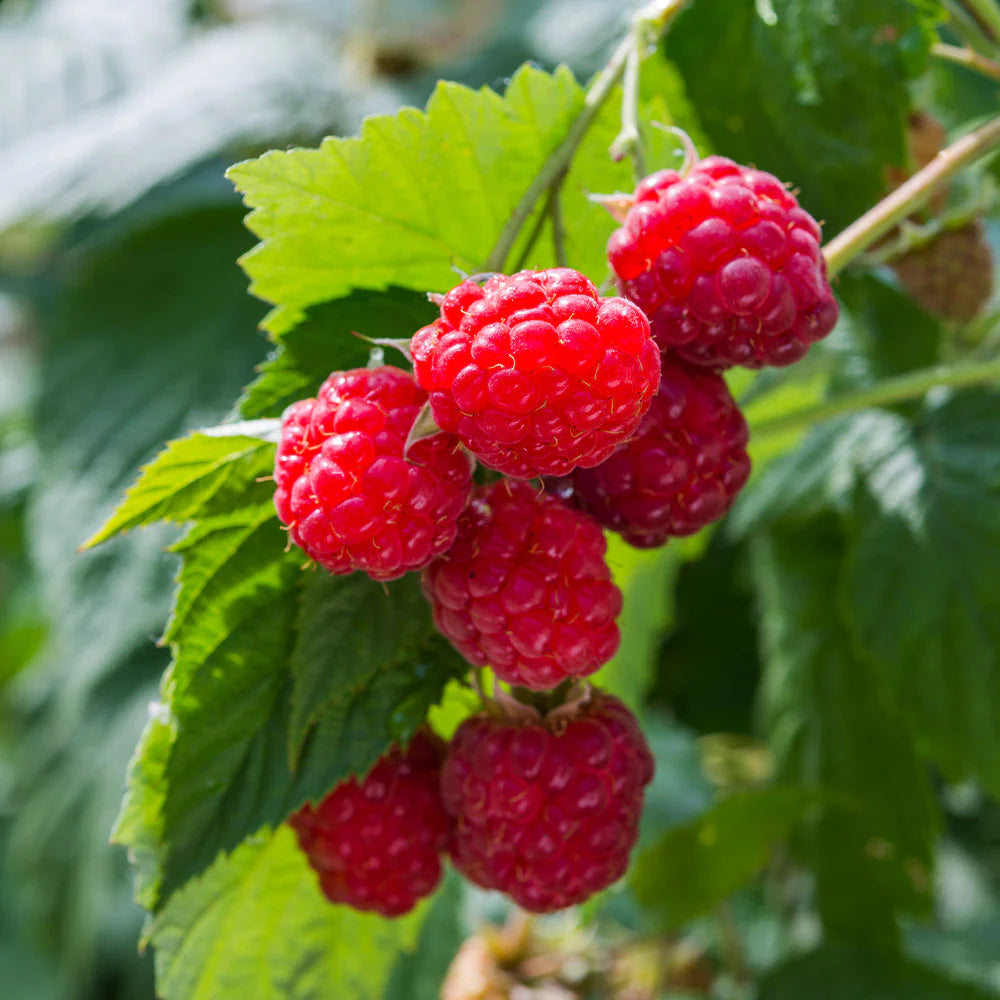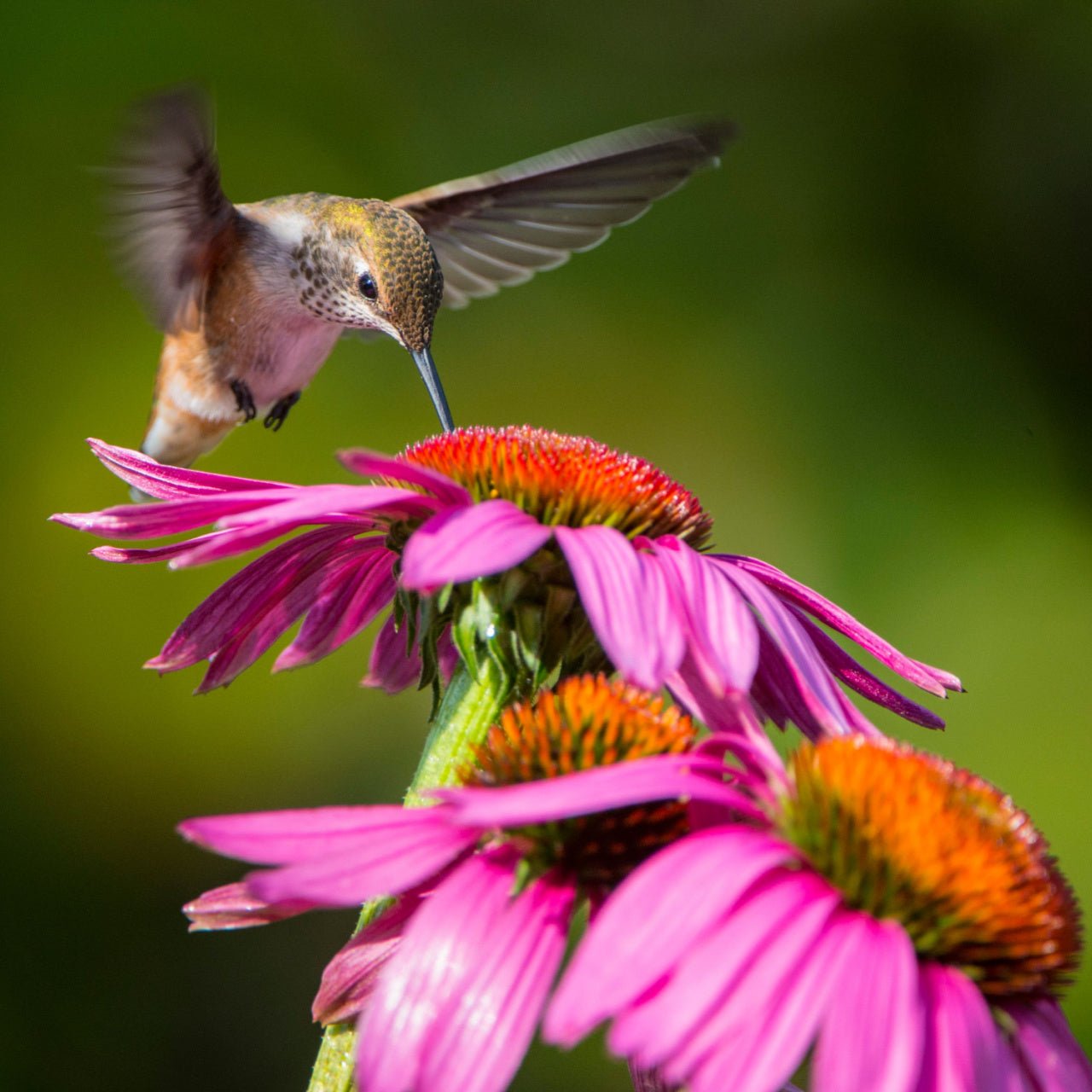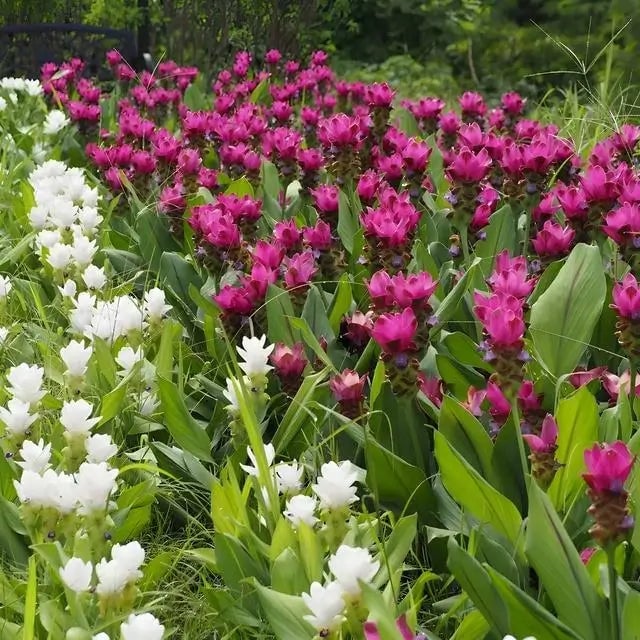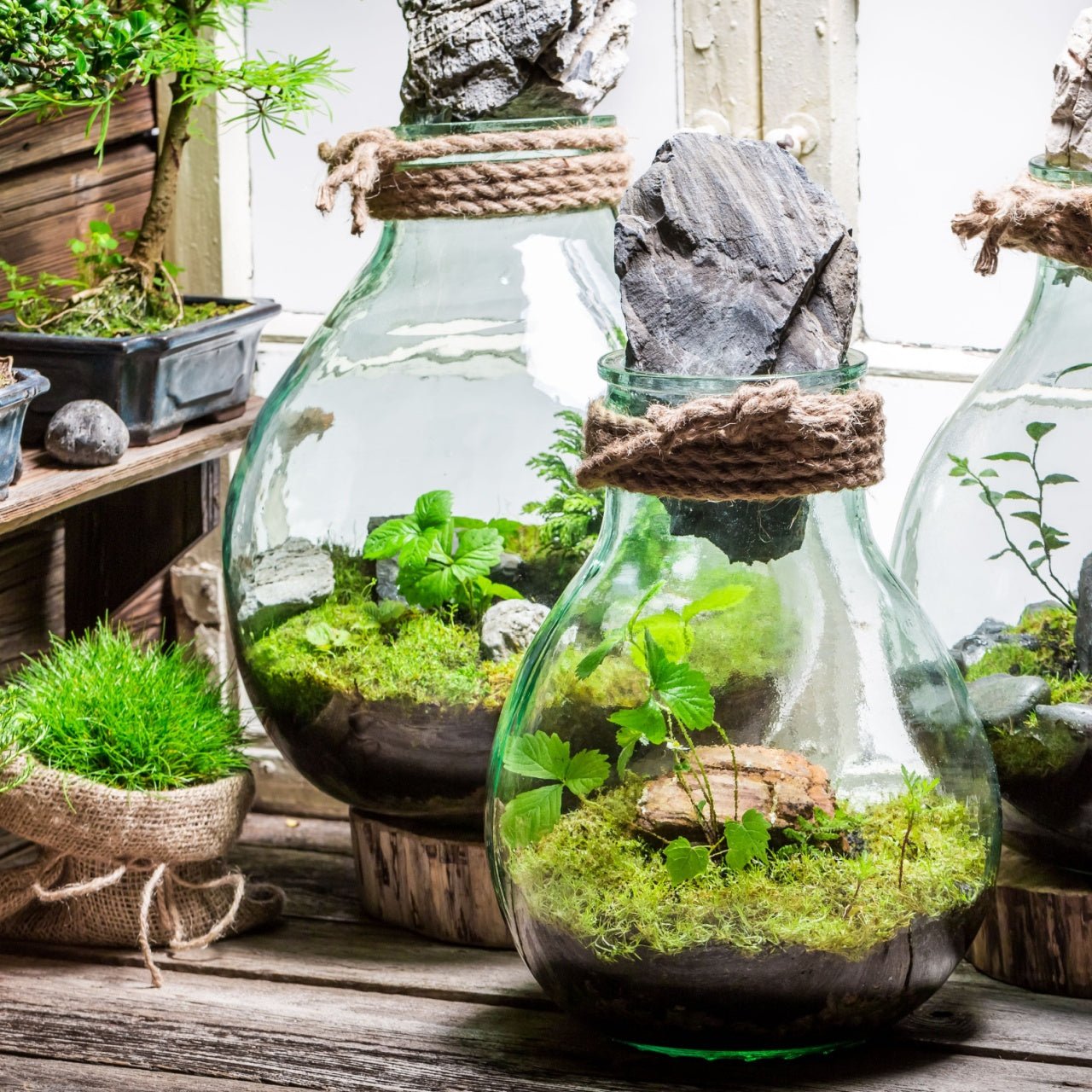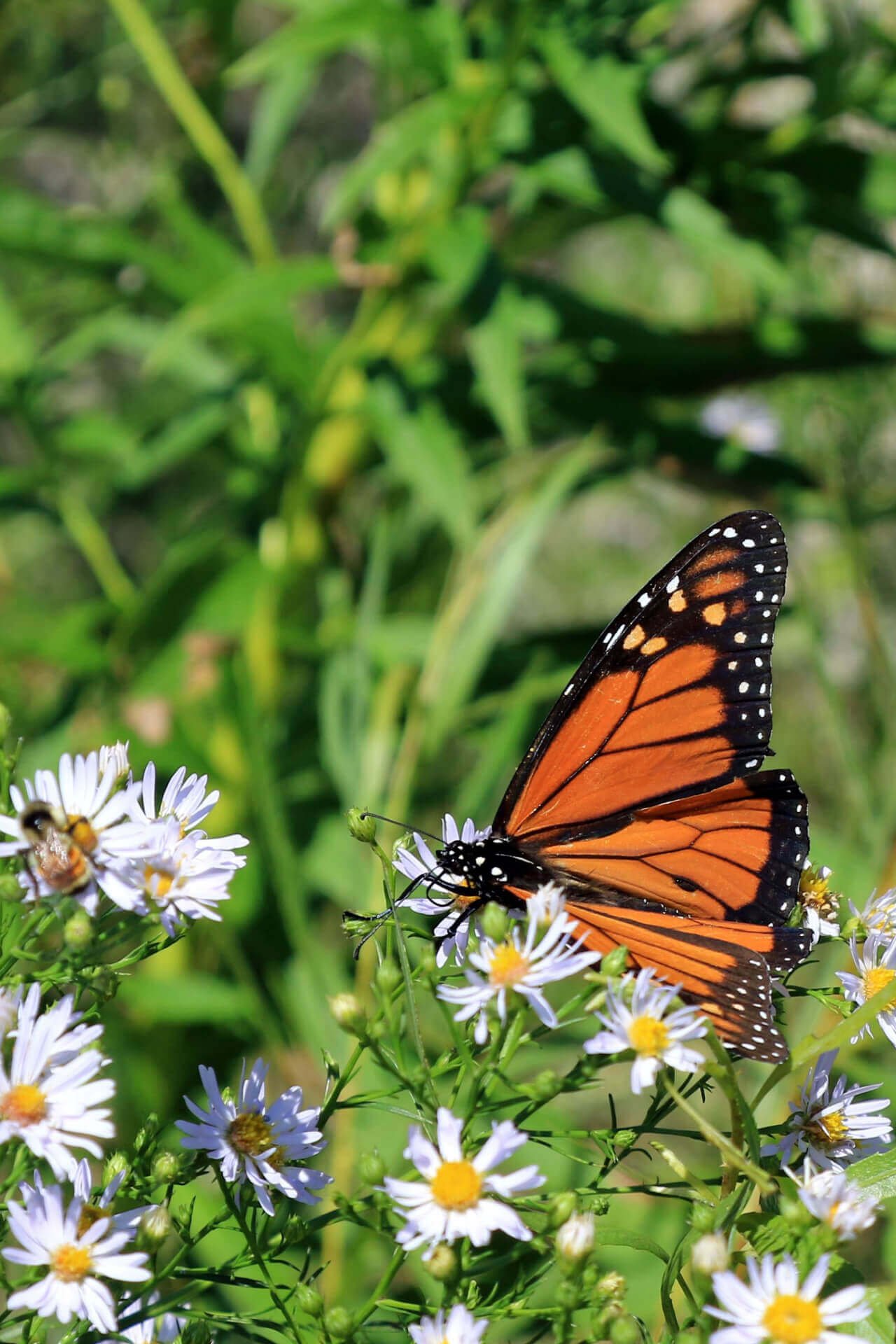
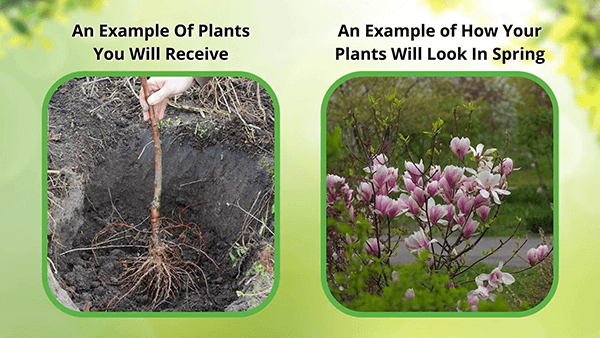
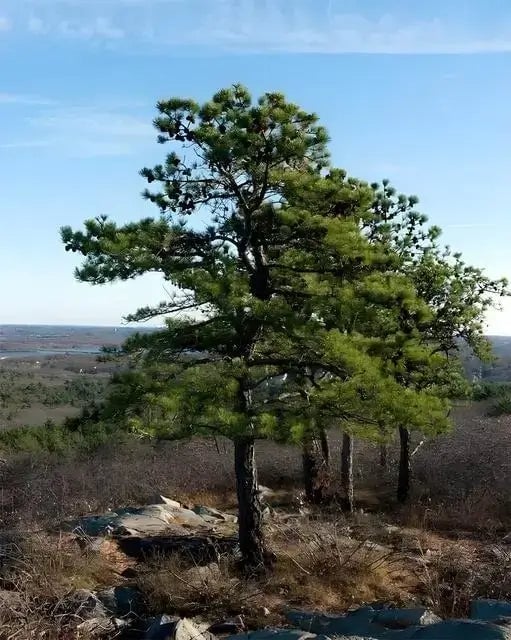

Pitch Pine Tree
Thrives in Zones 3 - 9
Drought-tolerant and resilient tree
Supports wildlife habitat and biodiversity
Provides excellent erosion control
Ships in
November 2025Pitch Pine - Pinus rigida
The Pitch Pine Tree (Pinus rigida) is an evergreen conifer that has sharp green needles.
Plant Details - Pitch Pine Tree
Family: Pinaceae
Light Requirement: Full Sun
Water Needs: Average
Height: 40 – 60 ft.
Spread: 30 – 50 ft.
Growth Rate: Fast
Wildlife Value: Attracts butterflies, birds
Landscape Uses and Maintenance - Pitch Pine Tree
Pitch Pine Tree is an evergreen conifer that is native to the eastern half of the United States of America, naturally growing in sandy or rocky environments. This tree is great for planting as an accent in your yard or for creating an evergreen border.
The bark of this tree is thick and scaly. The color of this bark begins as red, changing to a dark gray as it matures. Bark is resinous.
Its rigid needles of this tree grow in clusters of three. The needles can grow directly out of the bark of the tree. Its cones are dark brown and are pointed at the tips.
Plant this tree in an area that gets full sun. Avoid planting this tree in shade where its growth will be limited.
This tree prefers well draining, dry, and sandy soil. However, it can tolerate a variety of soils including clay or loam. This tree can handle soils that many other plants cannot – so if you have a difficult spot you want to plant, look no further.
This tree is drought tolerant. Be sure to water this tree thoroughly until it is well established. Avoid overwatering this tree during this time.
As this tree matures, be mindful to prune this tree once a year if it shows signs of diseased or damaged branches.
This is a deer resistant tree.
This is a great source of food for mammals, including squirrels. It will also attract birds that will nest in it.
Noteworthy Characteristics
The Pitch Pine Tree is significantly more salt tolerant than other species of pine, making it a good choice for being planted near roadsides.
This tree will attract plenty of butterflies to your yard. It is the host plant for the Pine Devil Moth.
This Is How Your Plants Will Look upon Delivery

Height at Maturity
Over 25 Feet
Care
Pitch Pine Trees are hardy and adaptable. Once settled, they prefer well-drained soil and are drought-tolerant. Water them during prolonged dry spells. Trim in winter to hold its shape and remove dead or diseased branches. Watch for pests.
Plant Reproduction
Pitch Pine spreads by releasing seeds from cones and resprouting
How to Grow and Care for Bare Root Trees
Bare root trees are shipped dormant without soil, making them lightweight, cost-effective, and easy to plant during the cool months of early spring or fall. To begin, soak the roots in a bucket of water for 4–6 hours before planting to rehydrate them. Choose a sunny location with well-draining soil and ample space for the tree’s mature size.
Dig a hole twice as wide as the spread of the roots and deep enough to keep the root flare (where the roots begin to spread from the trunk) at or slightly above ground level. Create a small mound of soil in the center of the hole, spread the roots evenly over it, backfill with native soil, and gently tamp down to remove air pockets. Water thoroughly after planting.
Keep the soil consistently moist (not soggy) during the first growing season, and apply mulch around the base—avoiding direct contact with the trunk—to conserve moisture and suppress weeds. Stake the tree if necessary, and prune only to remove dead or damaged branches. With proper care, your bare root tree will establish quickly and grow strong for years to come.
Shipping date depends on the date displayed and chosen when you order from the product's page.
We do not accept returned plants. If you purchased an extended warranty we do accept claims, please navigate to the warranty page for instructions HERE





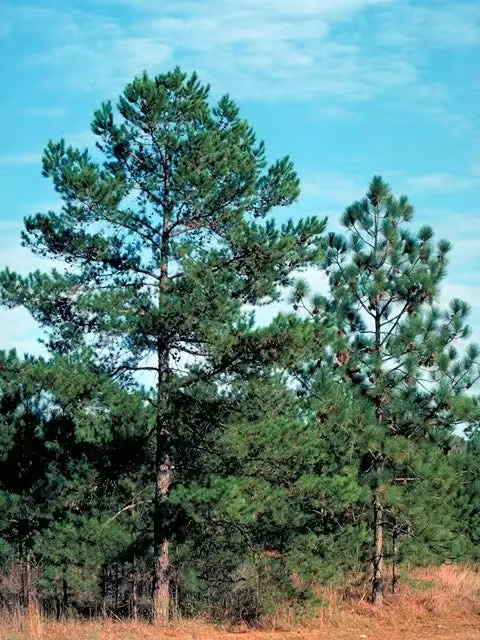
Fire Resilience:
Thick bark and resin-sealed cones help Pitch Pines survive and regenerate after fires.
Long-Lived:
This tree can live up to 200 years, providing enduring beauty and value.
Adaptable Growth:
Thrives in various soils and conditions, from the Northeast U.S. to parts of Canada.
Versatile Use:
Historically used for paper, lumber, turpentine, and shipbuilding due to high resin content.
Header
Use this content to share information about your store and products.
Frequently asked questions
Still have a question? Contact us here.
Yes, we ship all over the world. Shipping costs will apply, and will be added at checkout. We run discounts and promotions all year, so stay tuned for exclusive deals.
It depends on where you are. Orders processed here will take 5-7 business days to arrive. Overseas deliveries can take anywhere from 7-16 days. Delivery details will be provided in your confirmation email.
You can contact us through our contact page! We will be happy to assist you.








